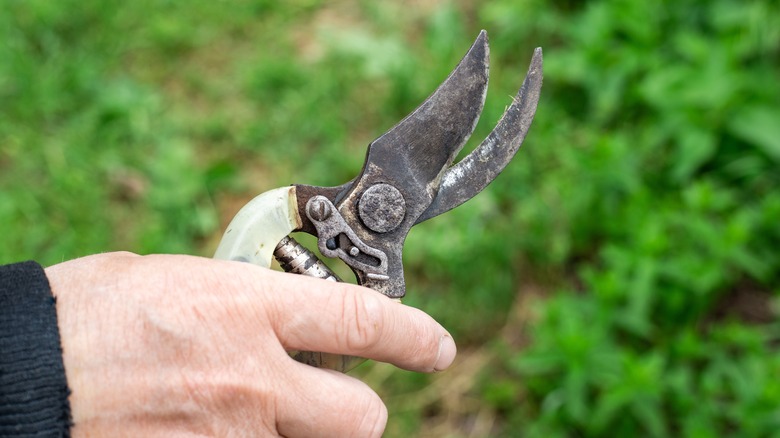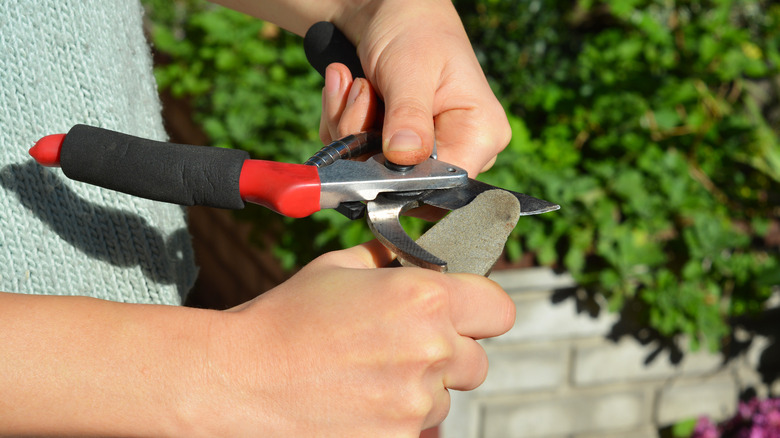The Best Method For Sharpening Your Garden Shears
Well-maintained garden shears are an essential gardening tool that every plant lover needs in their arsenal, whether they're a novice or a pro. In addition to cleaning and disinfecting them properly, you should keep shears well lubricated with WD-40, so they work better than ever. What's more, regular sharpening is just as important. Not only will dull shears make your work harder, they'll also damage plants by ripping and harming stems and making them more susceptible to disease.
Martha Stewart recommends a weekly cleaning and sharpening, but this will depend on your actual usage. If you're constantly reaching for your shears but are regularly cleaning and lubricating them, then sharpening once every six weeks should suffice. Alternatively, if you're using them for just a few hours a week, sharpening just one or two times a year should do the trick.
No matter the frequency, the best way to sharpen your shears is to use a sharpening stone (also called a whetstone) or a file. The whole process takes no longer than a few minutes, and just 10 to 20 passes of the blade against the stone or file is often enough to restore the blade's edge to its full potential. As simple as this sounds, though, there are a few key steps you won't want to miss for a proper sharpening.
How to sharpen your garden shears the right way
Before you start sharpening, check if your shears can be taken apart. If there's a big, easily accessible screw or bolt on the outside, unscrew it so that the two blades come apart. Just be careful not to nip your skin on the blades. If your shears can't be disassembled, don't worry; you can still sharpen them by following the same steps.
Start by cleaning the shears with dish soap and hot water, using medium grit sandpaper on sticky residue and WD-40 or steel wool on rust spots. Once they're dry, it's time to sharpen. If you're using a file, run a wet cloth over it, then align its flat surface with the shear's bevel — this is the angled edge of the cutting (i.e. upper) blade. Push the file across the bevel in one direction (never back and forth), keeping the natural angle of the blade, which is usually between 10 and 20 degrees. Repeat this movement until the blade becomes completely smooth with no visible nicks. Files are available in coarse, fine, and extra fine versions, and you may want to use all three in said order for optimal results.
Alternatively, if you're using a whetstone, start by soaking it in water for a few minutes, then place the bevel against it at a 10 to 20-degree angle. This time, rather than moving the sharpening tool, run your blade repeatedly in one direction until it's sharpened. You can also use a fine file to finish the job.

